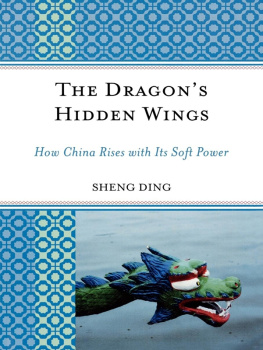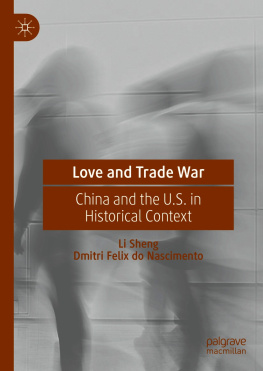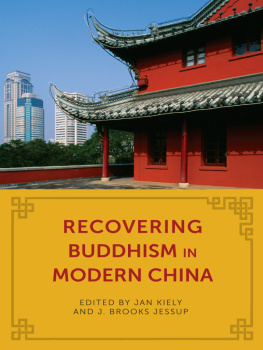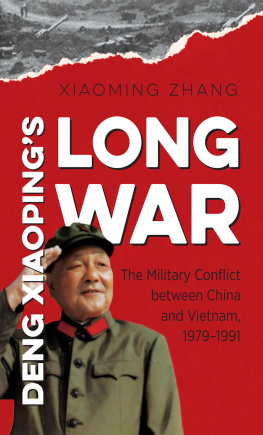Contents
Guide
Pagebreaks of the print version
Thriving in Crisis
THE SHENG YEN SERIES IN CHINESE BUDDHIST STUDIES
THE SHENG YEN SERIES IN CHINESE BUDDHIST STUDIES
Edited by Daniel B. Stevenson and Jimmy Yu
Funded jointly by the Sheng Yen Education Foundation and the Chung Hua Institute of Buddhist Studies in Taiwan, the Sheng Yen Series in Chinese Buddhist Studies is dedicated to the interdisciplinary study of Chinese language resources that bear on the history of Buddhism in premodern and modern China. Through the publication of pioneering scholarship on Chinese Buddhist thought, practice, social life, and institutional life in Chinaincluding interactions with indigenous traditions of religion in China, as well as Buddhist developments in South, East, and Inner/Central Asiathe series aspires to bring new and groundbreaking perspectives to one of the most historically enduring and influential traditions of Buddhism, past and present.
Michael J. Walsh, Sacred Economies: Buddhist Business and Religiosity in Medieval China
Koichi Shinohara, Spells, Images, and Maalas: Tracing the Evolution of Esoteric Buddhist Rituals
Beverley Foulks McGuire, Living Karma: The Religious Practices of Ouyi Zhixu (15991655)
Paul Copp, The Body Incantatory: Spells and the Ritual Imagination in Medieval Chinese Buddhism
N. Harry Rothschild, Emperor Wu Zhao and Her Pantheon of Devis, Divinities, and Dynastic Mothers
Erik J. Hammerstrom, The Science of Chinese Buddhism: Early Twentieth-Century Engagements
Jiang Wu and Lucille Chia, editors, Spreading Buddhas Word in East Asia: The Formation and Transformation of the Chinese Buddhist Canon
Jan Kiely and J. Brooks Jessup, editors, Recovering Buddhism in Modern China
Geoffrey C. Goble, Chinese Esoteric Buddhism: Amoghavajra, the Ruling Elite, and the Emergence of a Tradition
Thriving in Crisis
Buddhism and Political Disruption in China, 15221620
Dewei Zhang
Columbia University Press
New York

Columbia University Press
Publishers Since 1893
New York Chichester, West Sussex
cup.columbia.edu
Copyright 2020 Columbia University Press
All rights reserved
E-ISBN 978-0-231-55193-9
Library of Congress Cataloging-in-Publication Data
Names: Zhang, Dewei, author.
Title: Thriving in crisis : Buddhism and political disruption in China, 15221620 / Dewei Zhang.
Description: New York : Columbia University Press, 2020. | Series: The Sheng Yen series in Chinese Buddhist studies | Includes bibliographical references and index.
Identifiers: LCCN 2019047186 (print) | LCCN 2019047187 (ebook) | ISBN 9780231197007 (cloth)
Subjects: LCSH: BuddhismChinaHistory9601644. | Buddhism and politicsChinaHistory.
Classification: LCC BQ645 .Z43 2020 (print) | LCC BQ645 (ebook) | DDC 294.30951/09031dc23
LC record available at https://lccn.loc.gov/2019047186
LC ebook record available at https://lccn.loc.gov/2019047187
A Columbia University Press E-book.
CUP would be pleased to hear about your reading experience with this e-book at .
Cover image: Detail from Painting of Elegant Gathering by Chen Hongshou . Courtesy of the Shanghai Museum
Cover design: Chang Jae Lee
To my grandfather Liu Yichang(19081996)

Contents
.Huang Ming zuxun , printed by the Hongwu court
. A bronze bell for Baomingsi , sponsored by Jiajing court women in 1533
. Wanlis preface in a bestowed Buddhist canon, with Cishengs seal included
. Yongan Wanshou pagoda at Cishousi
. A yihui stela recording land assets, erected by eunuchs in 1548
.Painting of Elegant Gathering by Chen Hongshou
. The Great Baoen monastery in Ming Nanjing
. The bronze hall at Mount Wutai by Miaofeng Fudeng
. Lu Zhuangjian gong yigao by Lu Guangzu
. Bronze statue of Zibo Zhenke , whose death marked a major recession of late-Ming Buddhist renewal
. The spatiotemporal distribution of Cishengs monastery projects
. The spatiotemporal distribution of the northern canon in the Wanli era
. Cishengs connection with monks
. Social and temporal analysis of patrons in the Beijing area
. Social and temporal analysis of patrons in Suzhou prefecture
. Temporal distribution of eminent monks, 15221662
. Mobility patterns of eminent monks in BeijingNorth China
. Mobility patterns of eminent monks in Jiangnan
. Temple-building activities in the Beijing area
. Temple-building activities in Hangzhou prefecture
. Temple-building activities in Suzhou prefecture
. Temple-building activities in Songjiang prefecture
. Impact indexes of Beijing and Jiangnan as revealed by eminent monks
T he sixteenth day of the first month of 1565 was an ordinary day for most people in China, but a sad one for the monks of the Great Baoen monastery in Nanjing. Its abbot, Xilin Yongning (14831565), died that day at the age of eighty-two. Having served as the abbot of this monastery for thirty-four years and concurrently as a top monastic official in the Nanjing Central Buddhist Registry (senglu si ) for twenty-five years, Yongning was highly esteemed not only by the Baoensi community but also by the entire Buddhist world in the Jiangnan region. The Baoensi monks also felt disturbed by Yongnings prediction that their monastery would decline. To their surprise, his solution to the bad situation was to entrust them to a young monk eventually known as Hanshan Deqing (15461623). It took the Baoensi monks little time to realize that their leaders prophecy was not empty talk. The first major challenge facing the monastery was ironically generated by Yongning himselfor, to be more precise, by his funeral, which was estimated to cost three hundred taels of silver. Yongning left behind only about thirty taels, so the difference had to be met by a loan at a very high interest rate. When the funeral was over, the Baoensi monks began to worry about the debt. A meeting was convened, but no good idea was put forth. Finally, Deqing suggested selling Yongnings belongings and part of the monasterys land holdings. This was accepted, and the debt was taken care of. One year later, much more severe challenges emerged as a fire, caused by lightning, destroyed the main body of the monastery. Allowing such a degree of damage to an imperially sponsored monastery constituted a heavy offense. As many as fifteen superintendent monks were hence thrown into prison and were rumored to face the death sentence. Baoensi monks started to flee in panic, but Deqing did not. He instead occupied himself with taking care of his imprisoned colleagues and attempting to overcome the crisis. Shortly after Emperor Jiajing (r. 15221566) died, the indicted monks were set free with relatively minor punishments. Subsequently, spurred by the dilapidated state of the monastery, Deqing and a fellow monk named Xuelang Hongen (15451607) vowed to rebuild it at any cost. At the turn of the Wanli era (15731620), despite Hongens opposition, Deqing set off to North China in search of the Dharma and support for the monastery. In time, he spent most of his life outside the Jiangnan region where the Great Baoen monastery was located, and even became the mentor to the reigning emperors mother. In 1589, as a way of expressing respect to him, a copy of the Buddhist canon, a rare imperial gift, was bestowed from the inner court to the Great Baoen monastery and further enhanced its reputation and appeal.





![Zhang Gongzhe [张公者] - Contemporary Chinese Calligraphy [当代中国书法]](/uploads/posts/book/126572/thumbs/zhang-gongzhe-contemporary-chinese.jpg)



